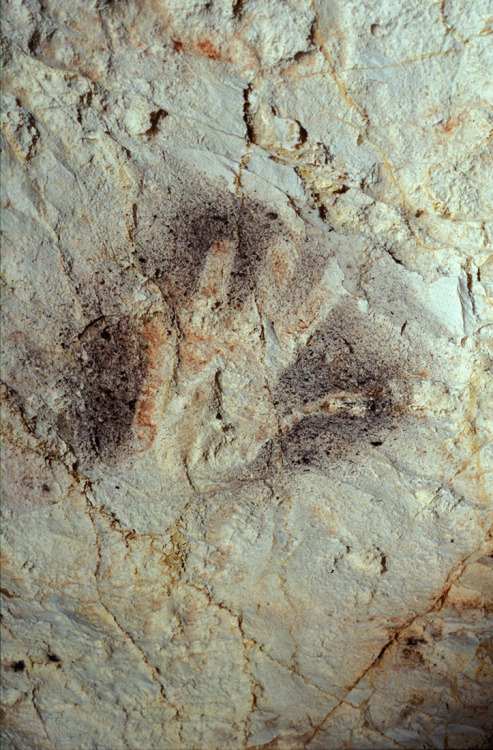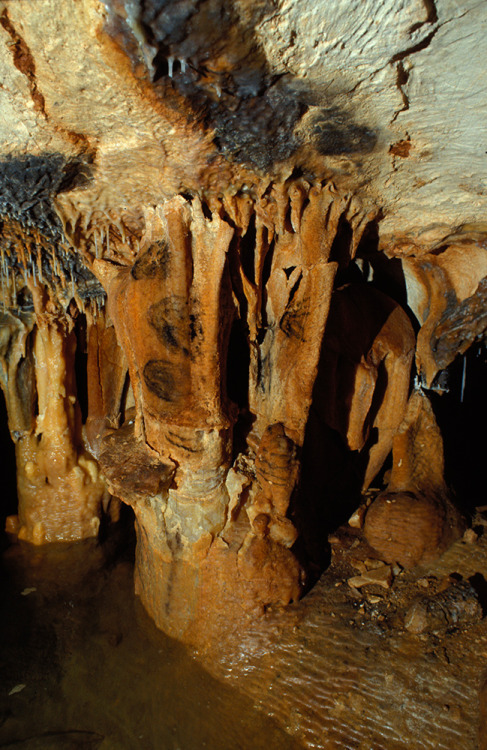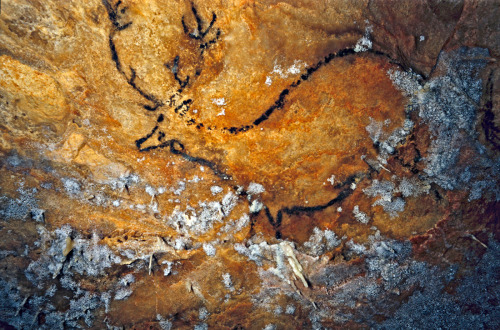Cosquer caveThe Cosquer cave is located near Marseille, France and was rediscovered by accident in 1
Cosquer caveThe Cosquer cave is located near Marseille, France and was rediscovered by accident in 1985 by a scubadiver named Henri Cosquer. As you might have guessed, the cave was named after the discoverer. The entrance of the cave itself lies about 35/37 meters below sealevel which follows a 150 meters long slope up before reaching a huge chamber with perfectly conserved cave art. Despite the cave being discovered in 1985, the paintings itself were only mentioned in 1991 after a diving disaster that took the lives of three divers in the cave, they died after they got lost.The discovery of the art inside the cave was quite significant. No other paleolithic art has been discovered before in the region of Marseille and the fact that this cave’s entrance is located under water can provide us with an answer. It is very likely that other similar caves in the region have been completely flooded after sea levels rose during the end of the last cold period of our ice age, this same rise of the sealevel also took Doggerland back into the seas. The big chamber inside the cave consists of several images of animals. A total of 150 pieces of cave art have been discovered, 65 of which are hand stencils and other motifs/symbols. Most of the animals are quite familiar in other prehistoric caves such as bisons, horses and ibexes but this cave features more marine animals than other European sites. The cave is located right next to the sea so it makes sense that the art inside this cave represents more sea life than art inside caves further removed from the sea such as Chauvet. Radiocarbon dating has dated the art inside this cave in two different time periods, 27,000 years ago and 19,000 years ago. In total, 177 animals are depicted in this cave belonging to eleven different species. There is also a rare depiction of a therianthrope (therian is Greek for wild beast and anthropos is Greek for human, these are half man/half beast beings) a human with a seal’s head. Unfortunately some of the submerged parts of the caves most likely contained cave art as well but these paintings have long disappeared thanks to the salty water and algae. What makes this cave so exceptional is the presence of marine animal paintings and tools to create these paintings such as a shell which still contains coal and a piece of calcite plague which once served as a lamp. Just like all other cave art found in Europe, the purpose behind these paintings is still unknown (despite several theories existing, I might write about them later). Many of these caves, including the Cosquer cave, are hard to reach places full with danger. Our earliest European ancestors risked their lives creating art in these dark spots underground. What is even more stunning is that several handprints made by children have been discovered as well. This means that children were also exploring these caves but we might never know why. Here are images of:Art inside the Cosquer cave,The underwater entrance photograph by Luc Vanrell, -- source link
#cosquer cave#prehistoric#france#prehistory#europe#cave art





